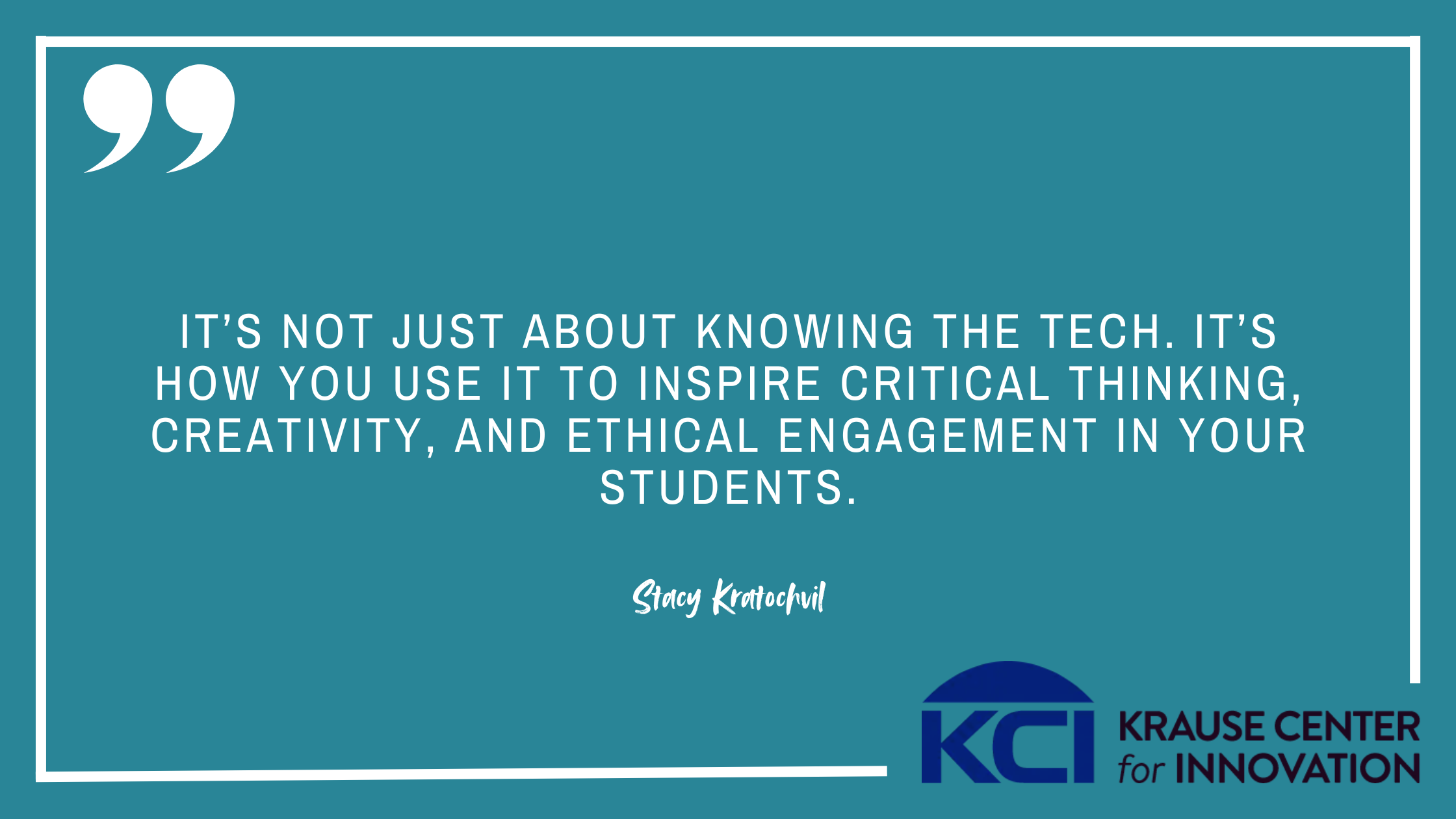February 6, 2025
Artificial Intelligence (AI) is transforming education—not just as a tech trend but as a tool to enhance teaching, learning, and leadership. For educators, understanding AI isn’t about chasing the latest innovation. Strengthening critical thinking, creativity, empathy, and ethical decision-making is really the goal. By mastering the basics, we can integrate AI with purpose, using it to expand possibilities while staying grounded in strategies that truly impact students.
Why AI Vocabulary Matters
A clear grasp of AI terms helps cut through the hype, communicate confidently with colleagues, and make informed decisions about which tools enhance learning. More importantly, we can learn to use these tools to deepen critical thinking, creativity, and ethical engagement. This gives us a start. Isn’t gaining clarity, empowerment, and impact exactly why you’re here?
Foundational AI Terms
Here’s a straightforward list of the terms every educator, administrator, and school leader should know, paired with their impact on teaching and learning:
- Artificial Intelligence (AI): When machines mimic human intelligence to perform tasks like reasoning, learning, and decision-making.
- Machine Learning (ML): A type of AI where machines learn and improve from data without being explicitly programmed.
Example: Tools like Grammarly learn to improve their writing suggestions based on feedback and usage patterns. - Neural Networks: Computer systems inspired by the human brain that recognize patterns and make predictions.
Example: Used in apps like Google Lens, which can identify objects in a photo. - Training Data: The information AI systems use to learn and improve their performance.
- Algorithm: A set of step-by-step instructions that a computer follows to solve a problem.
Analogy: Think of it as a recipe. The algorithm outlines the steps needed to achieve the desired outcome, like baking a cake. - Model: The trained version of an AI system that can perform specific tasks, like analyzing text or recognizing images.
Example: Google Translate’s model takes input text in one language and outputs it in another. - Bias: When AI produces unfair or inaccurate results due to flaws in the data or design.
Side note: Addressing AI bias requires us to also confront the human biases that influence these systems. When teaching your students about AI bias, encourage them to explore how bias arises, both in technology and in human systems, and discuss actionable ways to identify and disrupt it in both areas. - Large Language Model (LLM): Advanced AI systems like ChatGPT that can generate human-like text.
- Prompt: A command, question, or input given to an AI system to elicit a specific response or action. Prompts guide the AI by providing context or instructions, shaping how it generates text, answers questions, or performs tasks.
Example: When using ChatGPT, entering a specific question like “Explain the impact of AI on education in simple terms” serves as the prompt that directs the AI’s response. - Generative AI: AI that creates new content, such as writing, images, or music, based on patterns in data.
Side note: When ChatGPT, a generative AI tool, hit the scene in November 2022, it blew up because it showcased an unprecedented ability to generate human-like text in seconds. It was a turning point that highlighted both the promise and the challenges of using generative AI in everyday contexts.
Practical AI Applications in Education
- Adaptive Learning: Tools that adjust content and pacing based on students’ performance.
Example: Khan Academy’s AI assistant identifies where students struggle and provides targeted support. - Chatbot: AI-driven systems that simulate conversations, helping answer questions or provide support.
- Virtual Reality (VR): Technology that immerses users in a completely computer-generated environment.
Example: Tools like Google Expeditions allow students to explore places like ancient Rome or the Great Barrier Reef without leaving the classroom. - Augmented Reality (AR): Technology that overlays digital elements (like images or text) onto the real world.
Example: Apps like Merge Cube let students hold and manipulate 3D objects like a virtual human heart for anatomy lessons. - Digital Assistant: Tools like Siri or Alexa that help manage tasks like reminders or answering simple questions.
Ethical and Technical AI Terms
Understanding the ethical dimensions of AI is just as critical. Primarily so that WE are critical! Here’s what you need to know:
- Ethical AI: Building and using AI in ways that prioritize fairness, transparency, and respect for privacy.
Reflection: How can educators model ethical behavior when introducing students to AI tools? - Bias: A second mention here because addressing bias in general is that important.
- Hallucination: When AI produces incorrect or nonsensical information.
Side note: This is a funny term because people hallucinate. When machines make stuff up, it should be called something different. I heard someone once refer to it as “bot shit,” so I am going to try and make that a thing instead of hallucinations! ??
Enhancing Teaching and Learning
To truly harness AI in your teaching, connect these tools to timeless human skills like critical thinking, creativity, and ethical decision-making:
- Personalized Learning: Using AI to meet each student’s unique needs, but always with a focus on empathy and equity.
- Assistive Technology: Empowering students with disabilities through tools like speech recognition or screen readers.
- Multimodal AI: AI systems that can process and combine different types of data, like text, images, audio, and video, to create richer, more versatile outputs or analyses.

Practice Your AI Vocabulary!
Want to put your new knowledge to the test? See how you do on the short review game below!
- Practice with a ready-made deck of flashcards on Quizizz
- Play the AI Vocabulary Quiz Game on Quizizz!
Wrapping Up
Understanding AI vocabulary is a foundational step toward making the most of what these tools can offer in education. By familiarizing yourself with these terms, you’re not just equipping yourself to use AI tools more effectively—you’re also positioning yourself as a thoughtful leader in integrating technology with purpose.
But remember: It’s not just about knowing the tech. It’s how you use it to inspire human growth in your students. Whether you’re planning lessons, supporting students, or discussing technology with colleagues, I hope these concepts help you navigate AI with clarity and purpose!
Take Action:
- Start a conversation: Share one term from this blog with a colleague and discuss how it might impact your teaching or school leadership.
- Experiment: Try one AI tool mentioned here (or a new one) and reflect on how it aligns with your goals for student learning.
- Learn more: Join a professional learning community, attend a workshop, or read further resources to deepen your understanding of AI in education.
Ready to dive deeper into integrating AI with purpose? Check out the Krause Center for Innovation’s workshops and programs to become a leader in AI-enhanced education!
Note on AI Use:
I used ChatGPT to help me organize and refine my thoughts for this blog. I provided the ideas, notes, and direction, and the AI tool helped me with the definitions and pulling it all together. I reviewed and edited everything to make sure it reflected my voice, stories, and the message I wanted to share.

